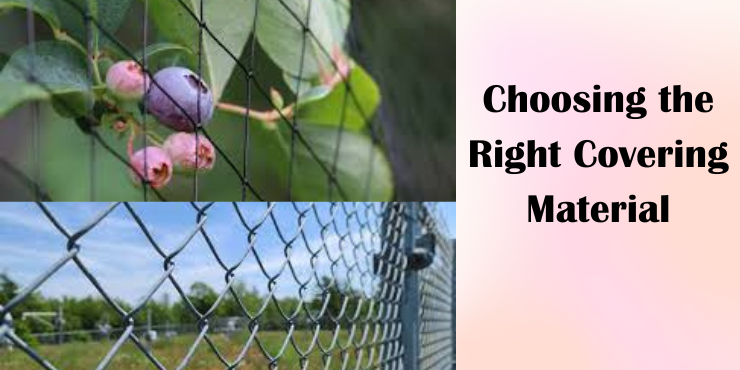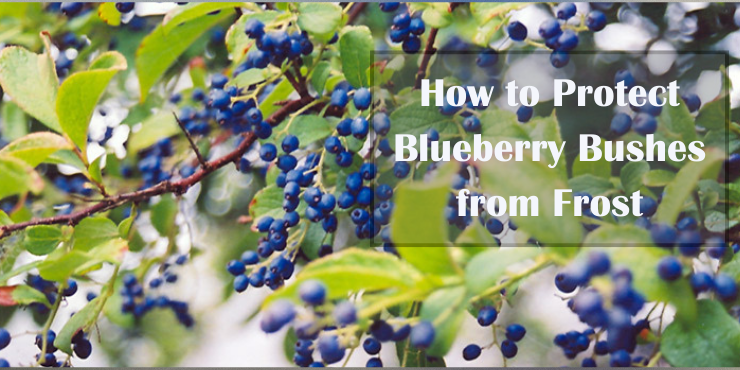Blueberry bushes are a popular choice for home gardeners because of their delicious fruit and beautiful foliage. However, these plants are vulnerable to frost damage, which can harm the buds, flowers, and fruits. To guarantee the health and productivity of your blueberry bushes, it’s essential to know when and how to protect them from frost. In this article, we’ll discuss six effective methods for safeguarding your blueberry bushes from frost.
1. Understanding Frost Damage to protect Blueberry Bushes
Blueberry plants are hardy and can withstand cold temperatures better than many other fruit crops. However, they are still vulnerable to frost damage, especially when temperatures drop below 28°F (-2℃). Frost can harm the buds, flowers, and fruit of blueberry bushes, leading to reduced yields and even plant death in severe cases. Proper protection is crucial to ensure the survival and productivity of your blueberry bushes.
2. Determining the Right Time to Cover Protect Blueberry Bushes
Effective frost protection for blueberry bushes depends on the timing of when you cover them. It is recommended to cover them once temperatures consistently drop below 20°F (-7℃), which usually happens during late fall, winter, or early spring, depending on your location. However, it is important to avoid covering the bushes for extended periods during the day to allow sunlight to reach the plants. To maintain light exposure while protecting against frost, it is suggested to use transparent covers.
3. Choosing the Right Covering Material

When it comes to protecting Blueberry Bushes, there are several options available. Burlap, blankets, sheets, or propylene covers can be used effectively. Burlap and blankets are cost-effective options that can provide insulation and protect against frost. However, they may not be as durable and can risk getting ruined with repeated use. Sheets and propylene covers are recommended because they are more durable and can be safely reused each year.
4. Wrapping Blueberry Bushes for Frost Protection
To protect blueberry bushes from frost, follow these steps: gently drape a sheet or cover over the rows of plants in the late afternoon to retain maximum heat overnight. There are two ways to secure the wrap – you can use pre-built frames that can be attached to the cover using velcro or zippers, or you can let the covering lie on the ground and weigh down the edges with weights. The pre-built frames provide a stable structure while using wood boards or bricks to weigh down the edges of the covering can also keep it in place.
5. Implementing Additional Frost Protection Methods
There are other methods to provide extra frost protection for blueberries, including proper watering to maintain moist soil.
a. Proper Watering
For protecting your plants from frost, it is suggested to water them during the day when temperatures are above freezing. An overhead irrigation system should be used for this purpose. Moist soil is better at conducting heat than dry soil, which can provide greater protection against frost.
Additionally, mulching around your blueberry bushes can provide extra insulation and protection against frost.
b. Adding Mulch
Adding mulch around your blueberry bushes can provide additional insulation to protect the roots from freezing temperatures. maintain soil temperature, and prevent freezing, apply a layer of mulch, such as straw or wood chips, around the base of the plants.
c. Using Heat Sources
Providing additional heat sources near your blueberry bushes can help counteract the cold temperatures. Heat lamps, heat mats, or jugs of hot water placed under the coverings can radiate heat and prevent frost damage. Experiment with different types of heat sources to find the most effective and cost-efficient solution for your blueberry bushes.
d. Employing Wind Machines
Using wind machines is an effective way to circulate air and prevent rapid cooling of warm air. This method works best when combined with a heat source to distribute warm air evenly and prevent frost damage. However, it is important to note that wind machines can be expensive and require constant power, making them unnecessary for all situations.
e. Avoiding Late-season Fertilization
Late-season Fertilization and Blueberry Bushes
To reduce the chances of frost damage to your blueberry bushes, it is advisable to avoid fertilizing them after August. This is because late-season fertilization can stimulate the growth of new offshoots, which are more vulnerable to frost damage. By preventing new growth before winter, you can safeguard your blueberry bushes and ensure their health and productivity in the upcoming season.
6. Monitoring Weather Conditions and Adjusting Protection Methods

Protecting your blueberry bushes is crucial to ensure their health, productivity, and the safety of the entire plant. One way to do this is by monitoring weather conditions closely and adjusting your frost protection methods accordingly. It is important to keep track of temperature forecasts, especially during the late fall, winter, and early spring, as these are the times when frost is most likely to occur. If the temperature drops below the threshold you set for covering your blueberry bushes, you should take immediate action.
Conclusion:
Protecting your blueberry bushes from frost is crucial for their survival and productivity. To ensure the health and well-being of your blueberry plants, it is important to understand the potential damage that frost can cause and implement effective protection methods. Always be prepared to adjust your protection methods based on the specific needs of your bushes and the severity of the frost conditions. Remember to cover your bushes at the right time and choose suitable covering material in order to provide the necessary protection.


